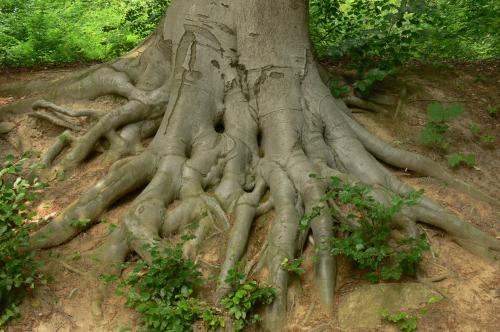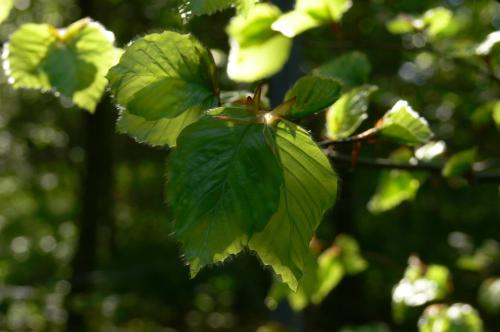The Beech
For centuries the beech as a source of timber was regarded as inferior to the oak, which not only supplied a more versatile wood, but also produced acorns for pig fodder. Consequently, beechwood was long neglected in forestry, and up to the mid-19th century was used almost exclusively as firewood.
The beech – Beneficiary of close-to-nature forestry
Beechwood became more important in forestry only after the discovery, that railway sleepers made from beechwood could be protected from fungal decay by impregnating them with tar oil (creosoting). Thus, beechwood realized higher prices, so that the reforestation of this wood species started to be profitable. By 1930, only about half of the cut down beechwood was used as fire wood anymore. However, beechwood still suffered further losses in regional forest areas until the first half of the 20. century, due to forest authorities favouring softwood.

The beech – from fueltimber to nature forestry
It was not until the transition to near-natural forestry, which gradually established itself in the 1980ies, that beechwood attracted more attention and is spreading continuously ever since. For European beech is an ideal example of a fierce competitor in the world of plants and is able to settle in the most varied biotopes.

Today, beech is the most common hardwood species in Germany with a percentage of roughly 15% of the whole tree population. The area in Germany, where beech is growing, has increased in the past 15 years by 150.000 hectares. By means of a largely near natural forest management, beech forests have become the prime example of sustained, multifunctional forestry – a forestry, which at the same time allows for logging, environmental protection and recreational use.
The beech – Beneficiary of close-to-nature forestry
Beechwood became more important in forestry only after the discovery, that railway sleepers made from beechwood could be protected from fungal decay by impregnating them with tar oil (creosoting). Thus, beechwood realized higher prices, so that the reforestation of this wood species started to be profitable. By 1930, only about half of the cut down beechwood was used as fire wood anymore. However, beechwood still suffered further losses in regional forest areas until the first half of the 20. century, due to forest authorities favouring softwood.

The beech – from fueltimber to nature forestry
It was not until the transition to near-natural forestry, which gradually established itself in the 1980ies, that beechwood attracted more attention and is spreading continuously ever since. For European beech is an ideal example of a fierce competitor in the world of plants and is able to settle in the most varied biotopes.

Today, beech is the most common hardwood species in Germany with a percentage of roughly 15% of the whole tree population. The area in Germany, where beech is growing, has increased in the past 15 years by 150.000 hectares. By means of a largely near natural forest management, beech forests have become the prime example of sustained, multifunctional forestry – a forestry, which at the same time allows for logging, environmental protection and recreational use.
Contact
Advice for architects, engineers, commercial builders and timber construction:
+49 (0)36926 945-560
baubuche@pollmeier.com
Advice on timber, BauBuche and for Pollmeier LVL:
+49 (0)36926 945-163 sales@pollmeier.com
